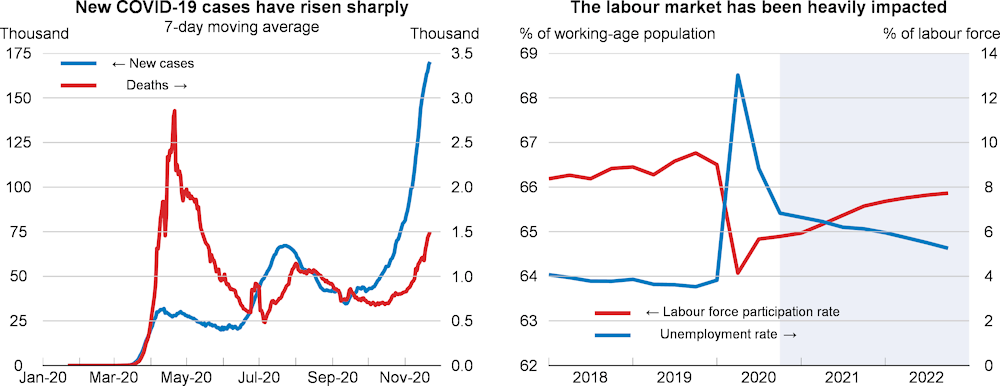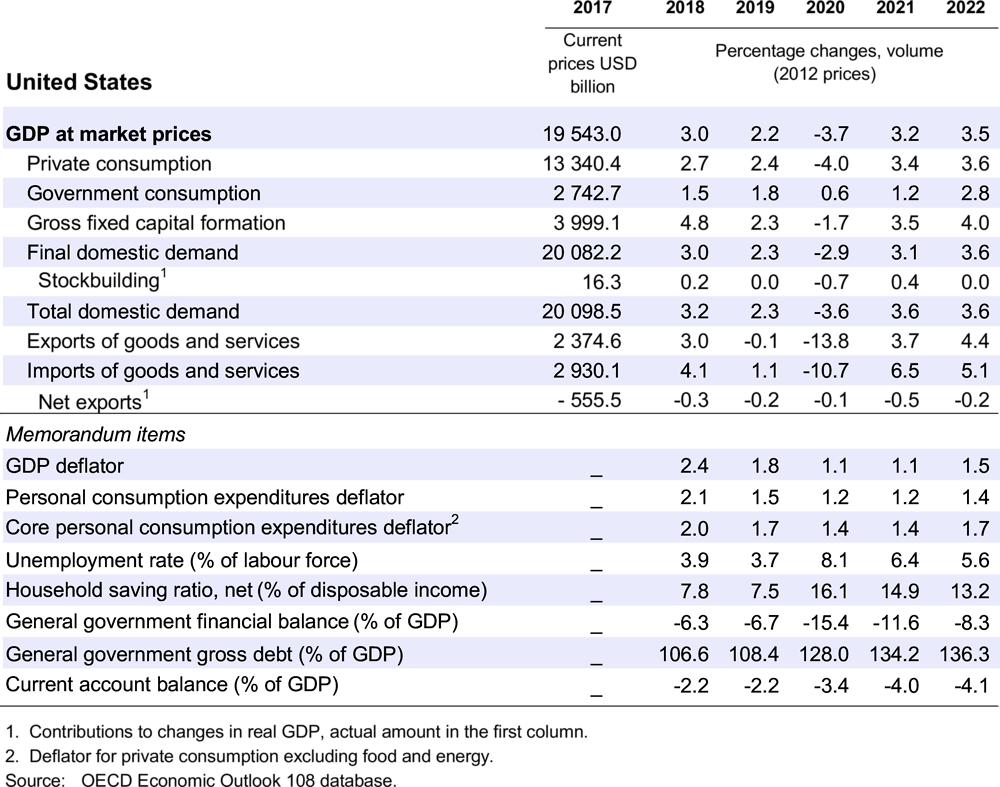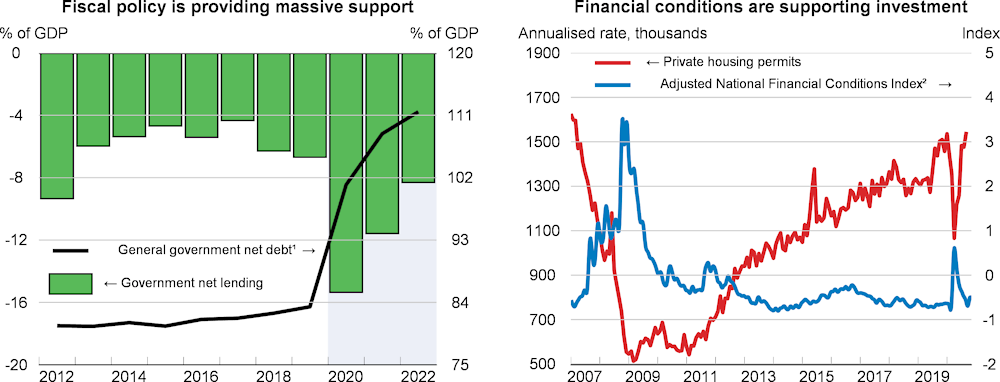The economy is recovering following the sharp fall in GDP and dramatic rise in the unemployment rate in the first half of 2020. Real GDP is anticipated to contract by 3.7% in 2020, before rising by 3.2% in 2021 and 3.5% in 2022. The unemployment rate will gradually fall, but will remain elevated compared with the pre‑pandemic period. This reflects activity in some sectors, such as hospitality and transportation, continuing to be impacted by the pandemic and impediments to cross-sectoral labour reallocation. A general rollout of an effective vaccine in the latter half of 2021 will allow an easing of containment measures and strengthen confidence.
Massive monetary and fiscal responses have protected households and businesses. However, in the absence of a new substantial fiscal stimulus programme, a severe fiscal cliff would result in a rapid withdrawal of support to households, massive layoffs and a wave of bankruptcies (this is assumed to be avoided in the projection). Some state and local governments will require federal government financial assistance given a sharp drop in consumption and travel-related tax receipts. Structural reforms to promote productivity-enhancing labour reallocation should also be prioritised. For example, restrictive land use regulations should be relaxed to promote the supply of new housing and the ability for workers to move to new job opportunities. Similarly, reforming the occupational licensing system and the use of non-compete agreements in work contracts would promote labour mobility and wage growth.



